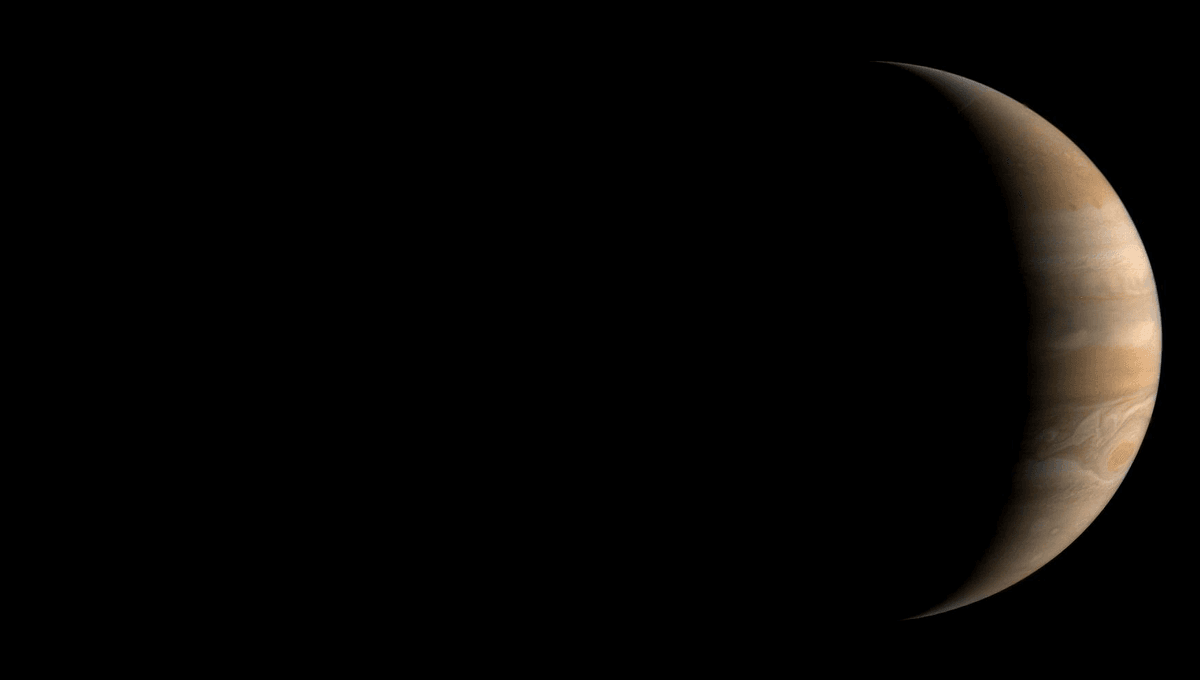
The stuff that makes up animals, planets, and stars is just a small part of the matter scientists believe is out there. Five-sixths of all matter in the universe is believed to be an invisible substance known as dark matter. We do not know what it is because it doesn’t interact with light, only with gravity and with the weak nuclear force.
That force is responsible for nuclear decay, and in the case of dark matter, it might lead the substance to annihilate. This process is expected to release ionizing radiation: light that can strip electrons from their molecules – and that’s where Jupiter as a dark matter detector comes in.
One of the most common ions in the universe is the trihydrogen cation (H3+). That is a molecule made of three hydrogen atoms that have lost one electron. Now imagine you have a large reservoir of hydrogen, massive enough to interact with the elusive dark matter: You could theoretically measure the amount of trihydrogen cations and work out the properties of dark matter.
“We point out that dark matter (DM) can produce an additional source of H3+ in planetary atmospheres,” the study authors wrote in a paper on the topic. “This will be produced if DM scatters and is captured by planets, and consequently annihilates, producing ionizing radiation.”
The scientists, Carlos Blanco of Princeton University and Stockholm University, and Rebecca Leane of the Stanford Linear Accelerator Center (SLAC) National Accelerator Laboratory and Stanford University, looked at six hours’ worth of data on Jupiter, three hours on either side of the planet’s midnight. The data was collected by the Cassini mission as it passed by the night side of the planet in 2000
Jupiter has a lot of hydrogen. It is very massive, the second heaviest object in the solar system. By looking at the night side, they looked at the portion hidden from the Sun. Sunlight can create these intriguing ions, so the approach reduces that contribution. The team found a signal – there is a certain amount of H3+ in the atmosphere of Jupiter’s nightside.
Now, this doesn’t immediately mean that the signal is all caused by dark matter – it could be dark matter or other sources could cause it. But they can constrain some of the properties of the substance.
The researchers believe that future observations might do even better. The European Space Agency’s JUICE mission can collect more sensitive measurements when it gets to Jupiter in the 2030s. It might also be possible to see the signal from more massive planets closer to the center of the Milky Way, where there’s more dark matter.
A paper discussing the result is published in the journal Physical Review Letters.
Source Link: Meet The Latest Dark Matter Detector: Jupiter’s Night Side